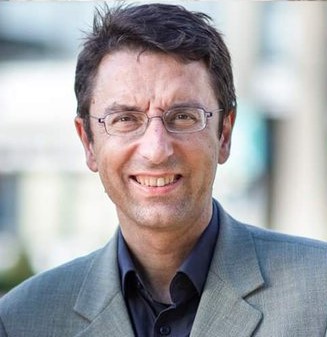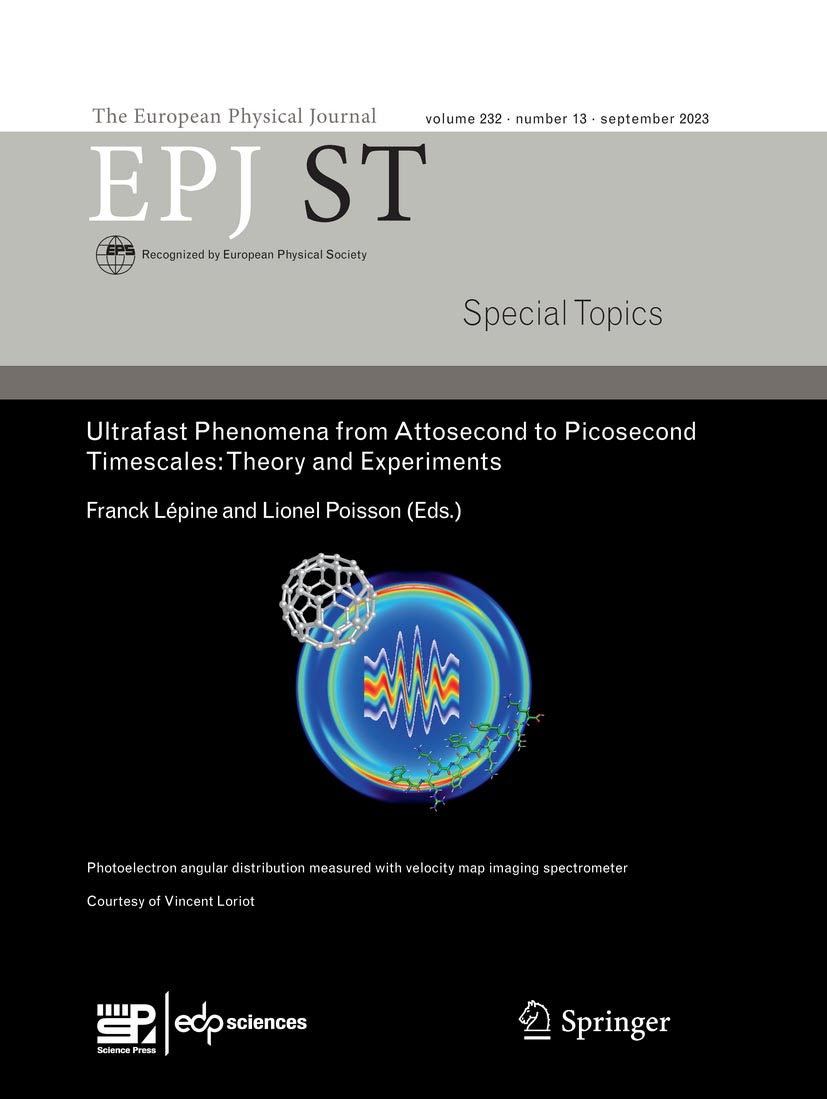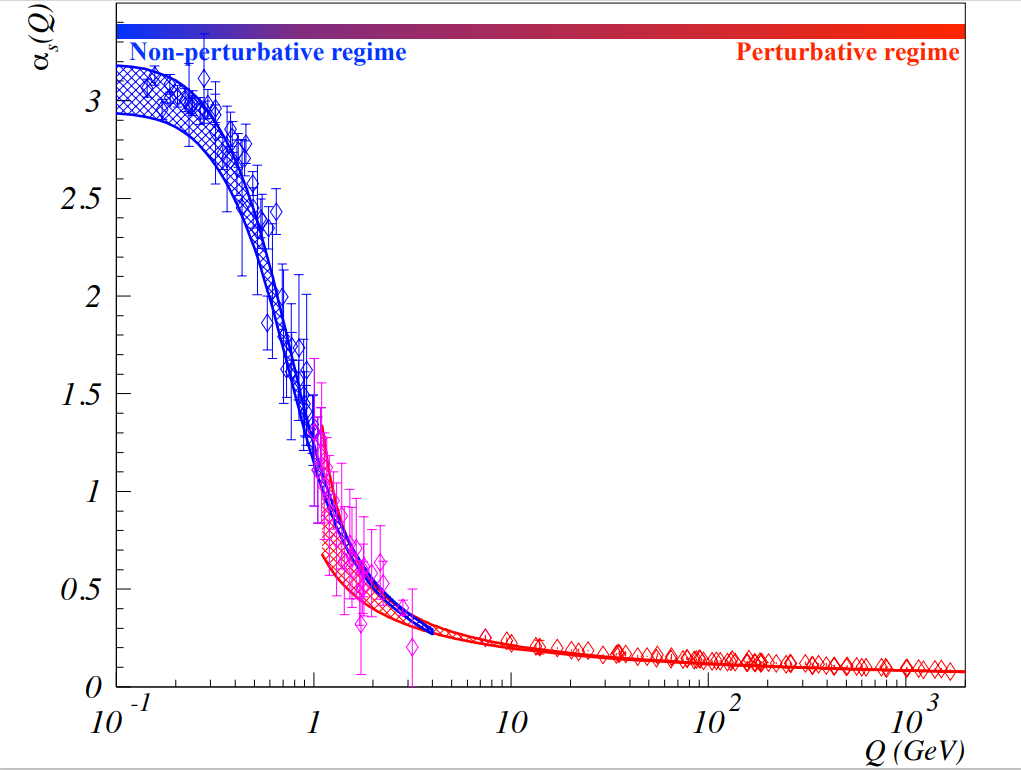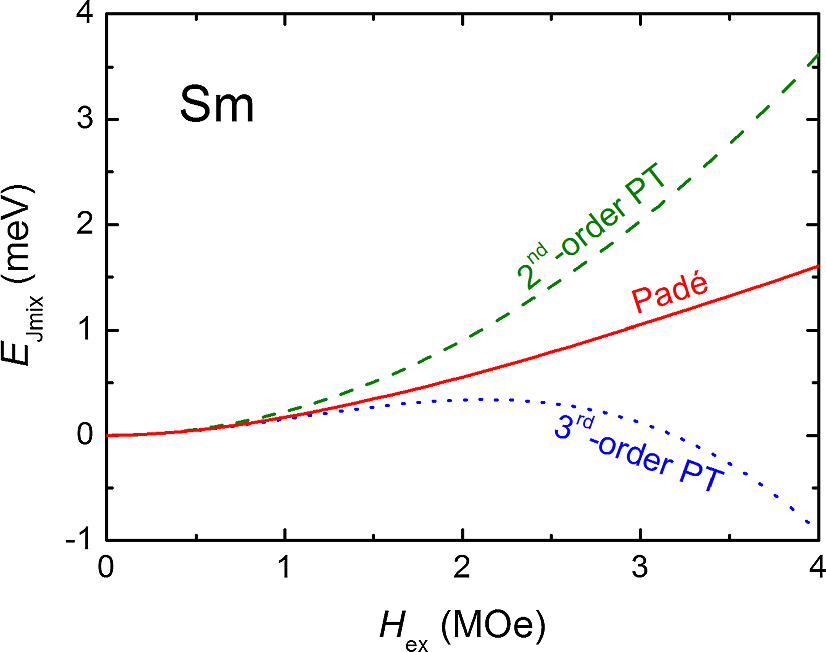News
EPJ B: Prof. Dr. Reinhold Egger new Editor-in-Chief for the Condensed Matter section as of 1 January 2024
- Details
- Published on 15 December 2023

The publishers of The European Physical Journal B are pleased to announce the appointment of Prof. Dr. Reinhold Egger as new Editor-in-Chief for the Condensed Matter section of the journal as of January 1st, 2024.
Reinhold Egger has been a full professor of theoretical physics at Heinrich-Heine-Universität Düsseldorf since 2001. He has worked in many different areas of condensed matter physics, including nonequilibrium quantum transport, topological quantum matter, superconductivity and low-dimensional quantum field theory. He has been part of the board of EPJB since 2011 and he is recipient of the Gerhard-Hess-Preis of the DFG and of the Physics Prize of the Akademie der Wissenschaften zu Göttingen.
The publishers take the opportunity to thank wholeheartedly Dr. Eduardo Hernandez, for his dedicated work and leadership during his term as Editor-in-Chief of EPJB.
EPJ ST Highlight - An exciting era for ultrafast science in France
- Details
- Published on 15 December 2023

Progress across five scientific topics currently being investigated by the French scientific network on ultrafast phenomena highlight both a rapid pace of discovery and emerging new directions of research.
From biochemistry to quantum mechanics, ultrafast phenomena can be found across a broad array of scientific fields. Now the subject of a rapidly expanding area of research, they describe how matter behaves over timescales ranging from picoseconds (thousandths of a nanosecond), down to attoseconds (billionths of a nanosecond).
Today, ultrafast processes are studied by a global community of scientists, who are dedicated to understanding the inner workings of matter, and exploring how they can be controlled and exploited for novel applications. In 2023, three researchers were awarded the Nobel Prize in Physics for their contribution to attosecond laser technology: clearly emphasising the growing relevance of the field.
EPJ C Highlight - Celebrating 50 years of QCD with a comprehensive review
- Details
- Published on 13 December 2023

A series of key experiments performed about 50 years ago revealed the eminent role of gauge theories. Two theories were formulated: the electroweak theory and the strong interaction theory QCD. An extensive worldwide research programme has since been set up and has step by step corroborated their predictions, while alternative theoretical attempts have been ruled out. Today these theories are well established and represent the cornerstones of the Standard Model.
The main authors, Franz Groß and Eberhard Klempt, succeeded in gathering experts to write articles covering all aspects of the vast field of strong interaction processes, described by Quantum Chromodynamics QCD, the theory of strong interactions. The fruit of their labours is a comprehensive review, ca. 650 pages long, published in the European Physical Journal C (EPJ C). The major aspects are outlined in 14 chapters, each of which is devoted to a specific topic. The authors’ goal was to provide general and detailed insights into both experiment and theory, for the benefit of research students and other interested readers alike.
EPJ Plus Highlight - Better calculations for the magnetic properties of neodymium compounds
- Details
- Published on 06 December 2023

Valuable magnetic properties of neodymium compounds have so far remained difficult to probe using high-energy neutron spectroscopy. A new correction to the technique could make these measurements far more feasible.
High-energy neutron scattering is a powerful tool in spectroscopy, allowing researchers to probe the physical and chemical properties of many different materials. It is especially well suited for studying the dense and complex structures of lanthanide-iron intermetallic compounds, such as the celebrated Nd2Fe14B. So far, however, researchers still haven’t figured out how to probe the material’s valuable magnetic properties using neutron scattering. In a new study published in EPJ Plus, Michael Kuz’min at Aix-Marseille University, together with Manuel Richter at Leibniz IFW Dresden, present a correction to the technique which could be used to determine the ‘exchange field’ of Nd: an important indicator of its magnetic properties.
EPJPV Highlight - Monolithic 3-terminal perovskite/silicon HBT-based tandem compatible with both-side contact silicon cells: a theoretical study
- Details
- Published on 04 December 2023

An attractive pathway towards high efficiency tandem
The Editors-in-Chief of EPJ Photovoltaics, Pere Roca i Cabarrocas and Jean-Louis Lazzari, are pleased to highlight an important paper published recently in the Special Issue on ‘EU PVSEC 2023: State of the Art and Developments in Photovoltaics’.
The article “Monolithic 3-terminal perovskite/silicon HBT-based tandem compatible with both-side contact silicon cells: a theoretical study” by researchers from Politecnico di Torino dives into the concept of using the bipolar transistor architecture to realize perovskite-on-silicon tandem solar cells with three terminals.
EPJ H Highlight - The Quark Model: A Personal Perspective
- Details
- Published on 15 November 2023

The properties of hadrons - both protons and neutrons, and heavier short-lived particles - are explained by the quark model. This was introduced by André Petermann (whose 1963 paper, in French, went unnoticed for 50 years); Murray Gell-Mann (whose insistence that they are purely mathematical entities discouraged take-up of the idea); and George Zweig.
The idea that protons and neutrons were composed of even smaller particles, with non-integral electric charges, was proposed in 1963/64 by Andre Petermann, George Zweig and Murray Gell-Mann, who dubbed them ‘quarks’. It was not until the mid-1970s, however, that the quark model became widely accepted. Chris Llewellyn Smith, now an emeritus professor at the University of Oxford and formerly the Director-General of CERN who put together the proposal to build the Large Hadron Collider, has published a ‘personal perspective’ on the development of the quark model and of the theory of the force that holds them together (quantum chromodynamics or QCD) in EPJ H: Historical Perspectives on Contemporary Physics. He had a ringside seat as a student in theoretical particle physics at Oxford from 1964-7, as a post-doctoral Fellow at CERN and at the Stanford Linear Accelerator Center where experiments that confirmed the reality of quarks were performed.
EPJ E Topical review - Lift at low Reynolds number
- Details
- Published on 14 November 2023
In hydrodynamics, a lift phenomenon arises when a force acts on an object perpendicularly to its initial motion. In everyday life, we are familiar with this effect allowing for instance planes to take off or soccer balls to follow bent trajectories. For such big and fast objects, inertia combines with symmetry breaking (wing shape profile or ball rotation) to give rise to lift. However, lift forces are also at play at low Reynolds numbers, i.e. for small objects or slow flows where fluid viscosity dominates over inertia.
EPJ D Topical Issue: Physics of Ionized Gases and Spectroscopy of Isolated Complex Systems: Fundamentals and Applications
- Details
- Published on 06 November 2023

Guest Editors: Bratislav Obradović, Jovan Cvetić, Dragana Ilić, Vladimir Srećković and Sylwia Ptasinska
This EPJ D Topical Issue presents selected papers covering a wide range of topics from fundamental studies to applications of ionized gases: Atomic Collision Processes - Electron and Photon Interactions with Atomic Particles, Heavy Particle Collisions, Swarms and Transport Phenomena; Particle and Laser Beam Interactions with Solids - Atomic Collisions in Solids, Sputtering and Deposition, Laser and Plasma Interaction with Surfaces; Low Temperature Plasmas - Plasma Spectroscopy and other Diagnostic Methods, Gas Discharges, Plasma Applications and Devices; General Plasmas - Fusion Plasmas, Astrophysical Plasmas and Collective Phenomena.
EPJ Plus Highlight – Magnetic Shielding for Particle Detectors
- Details
- Published on 06 November 2023

Carefully positioned wire coils can improve photodetector efficiency by counteracting Earth’s magnetic field
Particle physicists who hunt for neutrinos, cosmic-rays, and other charged particles rely on sophisticated instruments that detect very faint bursts of light given off when incident particles interact with a medium. The most common such instruments, called Cherenkov detectors, use photomultiplier tubes to capture as much of this light as possible. This provides a meaningful signal from which to glean information about the particle from whence it came. But their efficiency drops when subjected to Earth’s magnetic field.
In a study published in EPJ Plus, Sara Rodriguez Cabo, of the University of Oviedo, Spain, and her colleagues, now describe how specific arrangements of current-carrying wire coils around large cylindrical detectors can compensate for natural magnetic disturbances and shield photodetectors from it.
EPJ H Highlight - Acquitting a Physicist Accused of “Obscurantism”
- Details
- Published on 06 November 2023

A reanalysis of letters and publications show that David Bohm’s contemptuous contemporaries were misinformed and politically driven.
American-born British theoretical physicist David Bohm made many significant contributions to physics. But he’s most famous for challenging convention and interpreting quantum mechanics in terms of nonlocal or hidden variables. Several eminent contemporaries accused him of defending outdated ideals based in deterministic physics, rather than embracing his contemporaries’ non-deterministic views. In a study published in EPJ H: Historical Perspectives on Contemporary Physics, Andrea Oldofredi, of the University of Lisbon, Portugal, revisits Bohm’s private correspondences and academic works to reconstruct the evolution of his philosophical trajectory. The analysis indicates that bias against Bohm was mostly not based on scientific grounds, and instead underlines the originality of his ontological reflections.




